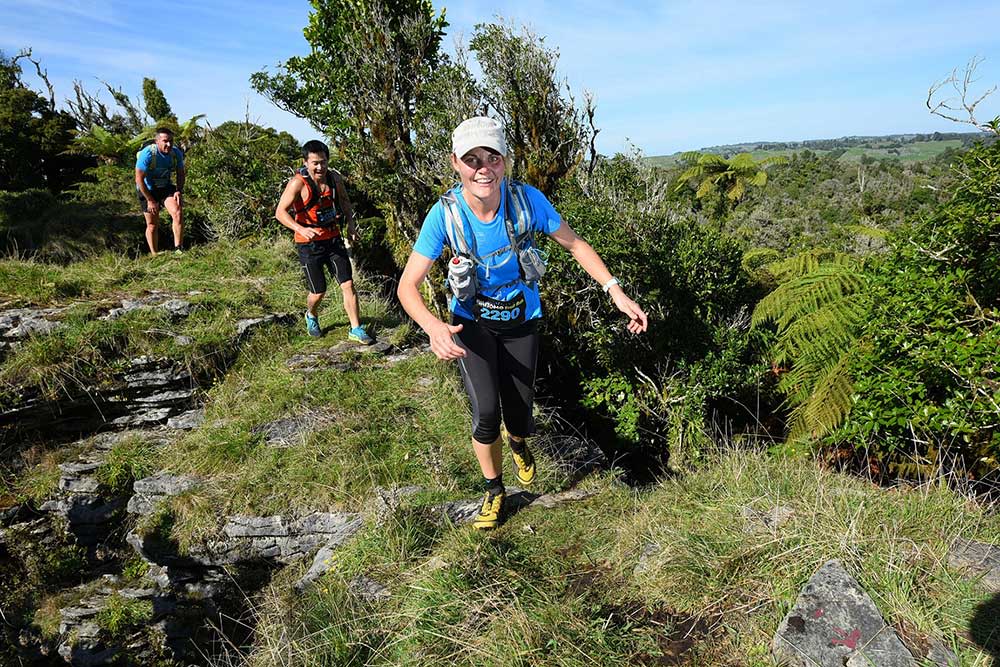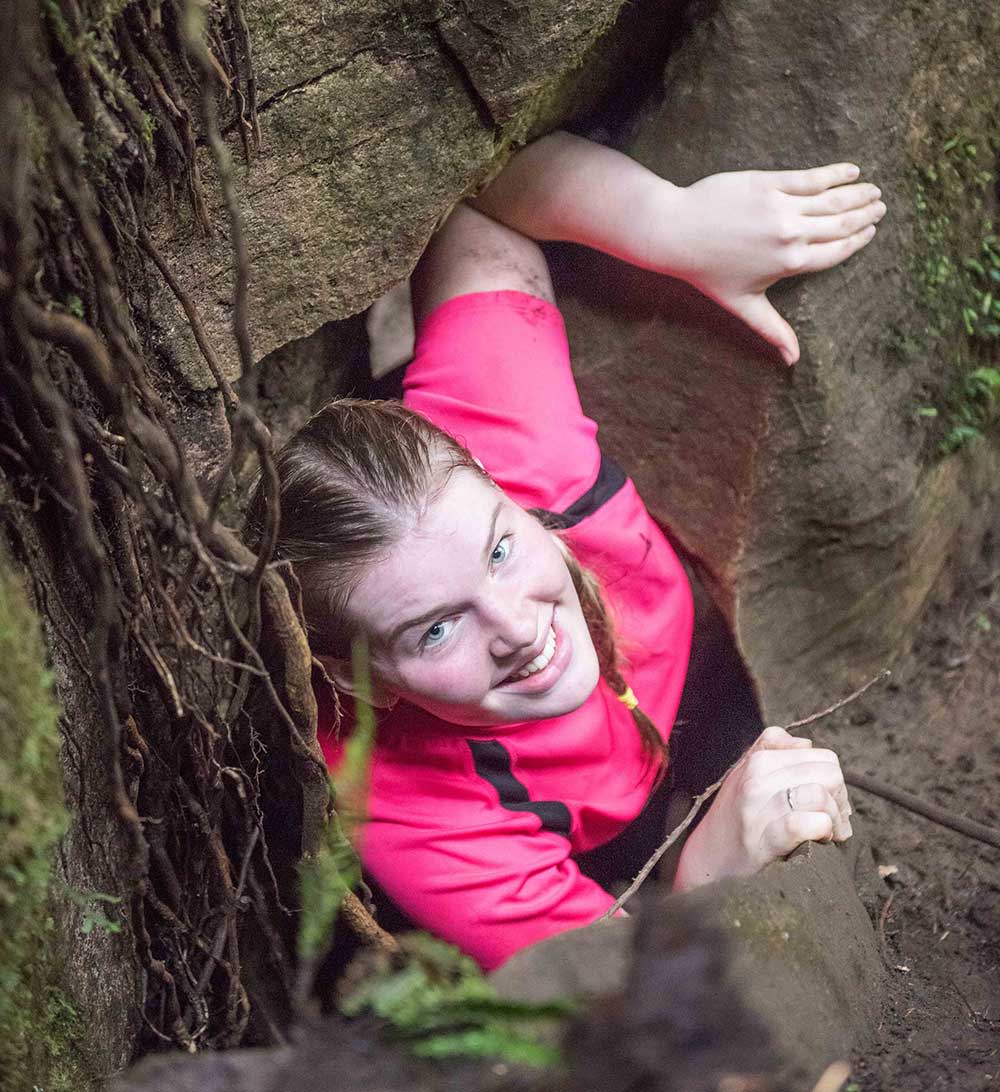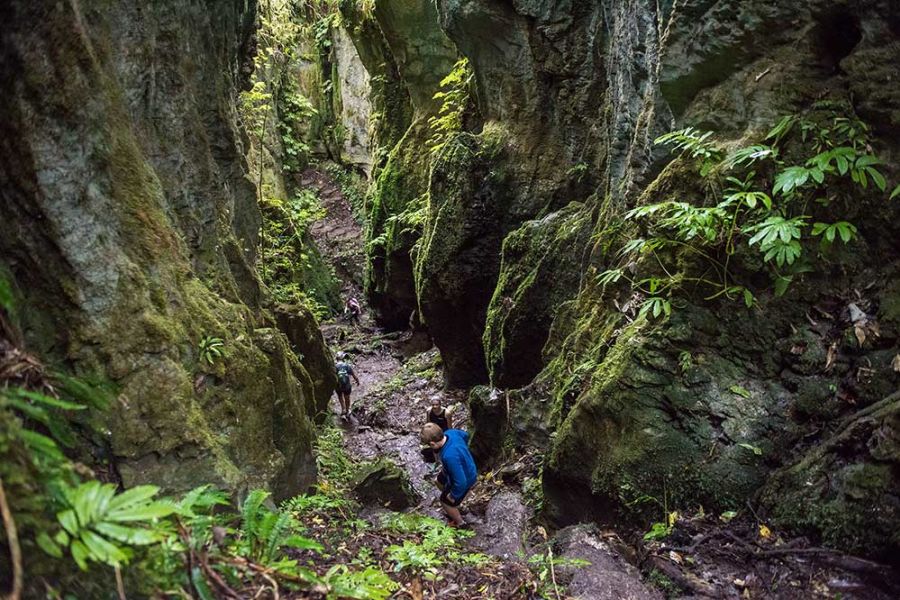Stubbs Farm - A Legacy of Conservation
When my great-grandparents and grandfather arrived at Te Kuiti in 1914, much of the farmable land had already been felled and burnt. I have seen photos. It looked like a battlefield; very few trees standing and a haze of smoke in the sky.
My grandfather talked of flocks of kaka flying in at dusk from the Waitomo Valley. My father showed me where the last big trees had stood. Just stumps now, rotting in the ground. As kids we explored the many caves on our farm. Within that ancient environment we found the remains of species that once inhabited this land. Moa up to 12 feet tall, kakapo, takahe, kiwi, weka, tuatara, giant snails, and many other species that are long extinct or that we are unlikely to ever see in this area again. They may be gone, but growing up as children here, along with a sense of loss, we had a real sense that somewhere in amongst this wild, barely penetrable forest there may be something precious still hanging on.
My parents, Anne and Alister, share a keen interest in the flora and fauna on the farm. I have a vivid memory of my father coming home very excited after finding a little group of birds with white heads feeding in the forest canopy. He thought, correctly, that they were whiteheads! We had never seen them before. We used to define the seasons by which orchid or tree was flowering at the time.

My parents and Uncle Antony’s decision to covenant the forest was made possible because the QEII National Trust existed and shared a similar passion. My parents didn’t want to give away the land. They wanted to protect it into the future. This process began in the early 1980s. I am very proud of their decision. It wasn’t easy to do and it took courage and strength; while they did not stand alone, the idea of conservation was not mainstream then like it is today.
Since then we have covenanted six more areas. The second covenant took 2 years to fence off by hand. As it happened it was the 1000th QEII National Trust covenant and in 1996 a large event was held here on the farm to celebrate the fact.
The third protected the headwaters of the Waitomo catchment. When my wife, Bex, and I took over running the farm in 2003, we continued to protect waterways. Some of the water can be seen above ground and some is hidden in cave systems flowing deep below. We are still working our way through this process but have already seen a marked change in the water quality on the farm. Our goal is to have all major waterways fenced off and planted out.
Environment Waikato and the QEII National Trust have helped with funding these fences. We have also had help replanting areas from the Forest Restoration Trust and Jan Simmons from the Department of Conservation, who has grown thousands of plants from seed collected from the farm, and organised planting days in the covenants with student and community groups. The efforts of all these people to help revegetate this land is amazing and makes a difficult job fun. People from all over New Zealand and the world have planted trees in the covenants. Some trees are now over 5 metres tall and have become a valuable food source for birds.

The process of healing the land is ongoing. Possum and goat control has been carried out for many years but because we are close to other large areas of forest, re-infestation is always a problem. The dry conditions we have experienced recently only attracts more hungry mouths to the bush. My dogs are very well fed as a result.
With a defined fence to farm to, the forest understorey and canopy has improved significantly over the past 30 years. Bird numbers have increased and as a result a natural reseeding process has begun. Young nikau palms are all through the bush thanks to the kereru. In 2004 we found fernbirds living in a remote swamp on the farm, and more recently spotless crake in a retired wetland area.
To be a conservationist for us is not just about putting up fences and planting trees. It’s about people. We are lucky enough to have an asset in the form of caves, karst and bush that people have been drawn to for over 50 years. We have always been happy to share our covenants with others. Cavers, trampers, researchers, school groups, scouts, film crews, corporate groups, rock climbers, and trail runners all come here.
Many of the activities on the land could not have been predicted in the early 1980s when the first covenant went in. I am very thankful to the QEII National Trust for having the foresight to recognise this and continue working with us to achieve our goals while not compromising the initial intent of the covenant agreement.
I was asked recently by a film crew why we had protected so much of the farm. I said ‘whatever way you frame it, it was the right thing to do’. It is as simple as that.
Ben Stubbs
